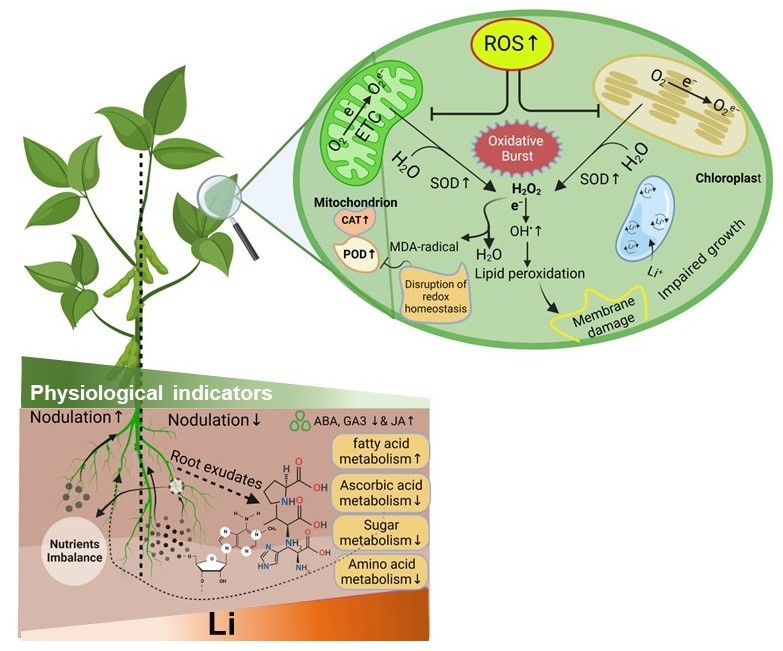Noman Shakoor, doctoral degree student at China Agricultural University and Muhammad Adeel, distinguished associate professor at Beijing Normal University, Zhuhai, has reported the impressive findings with other teammates in the Journal of Hazardous Material (IF=14.2). A serious joint effort has been made by all team members to expose the lithium uptake in soybean subcellular parts, mineral homeostasis and root metabolomic. Their findings revealed that lethal concentration of lithium on plant physiological and photosynthetic indicators was 146-177 mg kg-1 which might be an alarming situation for agricultural ecosystem. The higher mobility of lithium was reported in shoots (383 fold) relative to the root (4.2 fold), that may cause the traffic transfer in food chain. Lithium was mainly deposited in vacuole (103-320%) followed by cell wall (78-203%), mitochondria (46-303%), nucleus (21-298%) and plastid (26-298%), which suggested that both compartments (vacuole and cell wall) act as crucial defensive barriers against lithium stress in soybean.

Surprisingly, high levels of lithium (150 mg kg-1) in soil dramatically altered and down-regulated the specific root metabolites, ascorbate metabolism, aminoacyl-tRNA biosynthesis and pentose phosphate pathways leading to the poor soybean growth and development. These findings will be helpful for agricultural scientist to better understand the fate of lithium in soybean plants. Further, our results give an alarm to environmental protection agencies and health governing bodies to take necessary actions for safe environment and avoidance of lithium accumulation in human diet.

